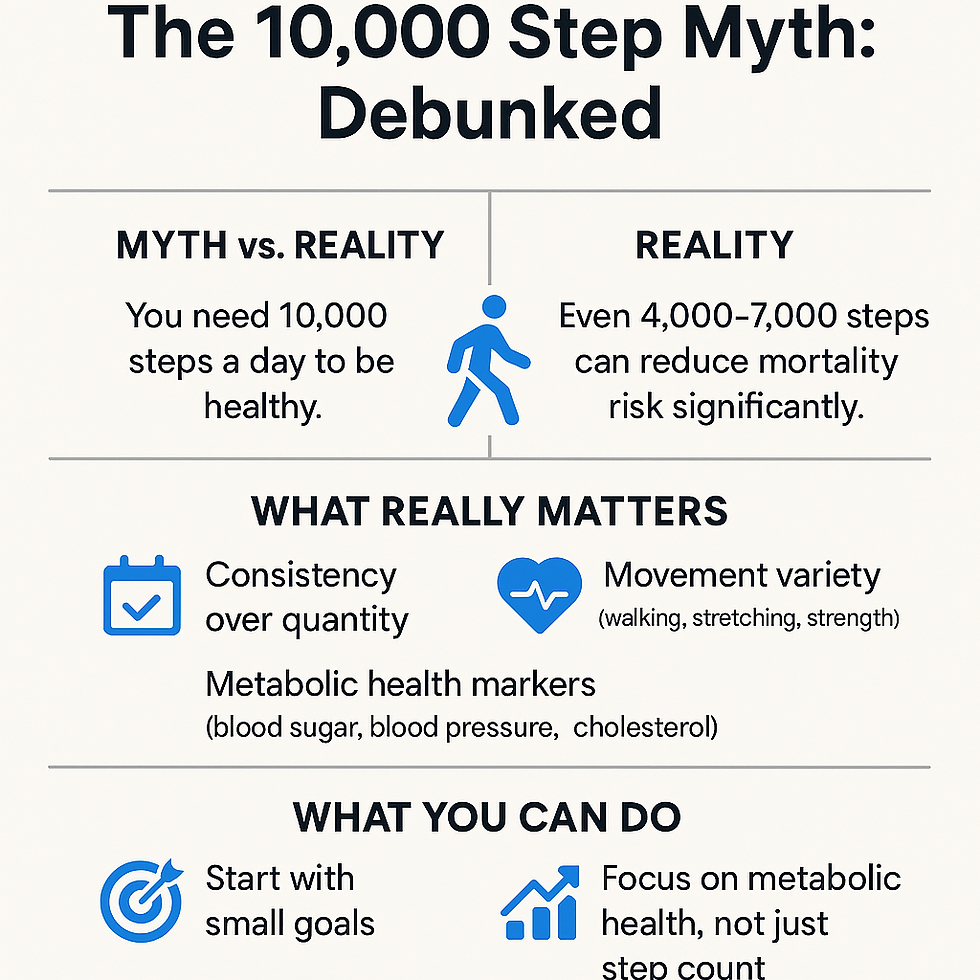What Can the Chiefs Teach Us About Obesity? or Using Your BMI to Diagnose Obesity is Questionable at Best!
- Matthew Lindquist
- Jan 19
- 3 min read
Another year and another Kansas City Chiefs AFC Championship game! 🎉 As we celebrate the Chiefs' success, let's take a moment to talk about something that's often misunderstood: using BMI to diagnose obesity
When it comes to diagnosing obesity, Body Mass Index (BMI) is often the go-to metric. However, relying solely on BMI can be misleading and doesn't always paint an accurate picture of an individual's health. To illustrate this point, let's take a look at some of the Kansas City Chiefs' starting defensive squad!
What is BMI and Why is it Questionable?
BMI is a simple calculation using a person's height and weight: BMI=weight(kg)height(m)2BMI=height(m)2weight(kg) While it can provide a general indication of whether someone is underweight, normal weight, overweight, or obese, it doesn't account for muscle mass, bone density, overall body composition, and racial and sex differences. This can lead to misclassification, especially in more muscular men and women.
The Chiefs' Starting Defensive Squad: A Case Study
Let's calculate the BMI for the Kansas City Chiefs' starting defensive squad based on their listed weights and heights on NFL.com:
Chris Jones: Height: 6'6" (1.98 m), Weight: 310 lbs (140.6 kg)
BMI: 35.8 (Class 2 Obesity)
George Karlaftis: Height: 6'4" (1.93 m), Weight: 263 lbs (119.3 kg)
BMI: 32.1 (Class 1 Obesity)
Felix Anudike-Uzomah: Height: 6'4" (1.93 m), Weight: 255 lbs (115.7 kg)
BMI: 30.9 (Class 1 Obesity)
Leo Chenal: Height: 6'3" (1.91 m), Weight: 250 lbs (113.4 kg)
BMI: 31.1 (Class 1 Obesity)
Nick Bolton: Height: 5'11" (1.80 m), Weight: 237 lbs (107.5 kg)
BMI: 33.0 (Class 1 Obesity)
Trent McDuffie: Height: 5'11" (1.80 m), Weight: 193 lbs (87.5 kg)
BMI: 26.7 (Overweight)
Bryan Cook: Height: 6'1" (1.85 m), Weight: 206 lbs (93.4 kg)
BMI: 27.2 (Overweight)
L'Jarius Sneed: Height: 6'1" (1.85 m), Weight: 192 lbs (87.1 kg)
BMI: 25.1 (Overweight)
Justin Reid: Height: 6'1" (1.85 m), Weight: 207 lbs (93.9 kg)
BMI: 27.3 (Overweight)
Derrick Nnadi: Height: 6'1" (1.85 m), Weight: 317 lbs (143.8 kg)
BMI: 42.0 (Class 3 Obesity)
Mike Danna: Height: 6'2" (1.88 m), Weight: 257 lbs (116.6 kg)
BMI: 32.5 (Class 1 Obesity)
What Can We Learn?
As we can see, many of the Chiefs' defensive players fall into the categories of overweight or obese according to their BMI. Given his career game with 3 sacks! in their 2025 AFC Divisional game against the Texans, let's point out George Karlaftis. Here's the beast!

He and these athletes are in peak physical condition and their high BMI is largely due to their muscle mass, not excess fat. This highlights the limitations of using BMI as a sole indicator of health.
Recent Research: Fitness Over Weight
Study Reveals Surprising Links Between Fitness, Weight, and Health Risks
A recent study published in the British Journal of Sports Medicine explored how cardiorespiratory fitness (CRF) relates to body mass index (BMI) and the risks of dying from cardiovascular diseases and other causes.
They showed that people who are fit—no matter if they are of normal weight, overweight, or have obesity—tend to have much lower risks of mortality compared to those who are unfit in any weight category. In fact, their study proposed that individuals with obesity who maintain good cardiovascular fitness face no significant risk of cardiovascular disease, similar to their fit counterparts who are of normal weight.
This study highlights the importance of staying active and fit, regardless of your weight!
A Better Approach
Instead of relying solely on BMI, consider a more comprehensive approach to assessing health and obesity:
Body Composition Analysis: Measures the percentage of fat, muscle, and bone in the body.
Waist-to-Hip Ratio: Assesses fat distribution and risk of cardiovascular diseases.
Physical Fitness Levels: Evaluates strength, endurance, and overall physical performance.
Metabolic Health Indicators: Includes blood pressure, cholesterol levels, and blood sugar levels.
Our Takeaway
Just because you have increased weight or a bigger body doesn’t inherently mean you are unhealthy. Staying active and as fit as we can remains the most important thing we can accomplish. If you think you might fit in this category, I recommend being evaluated by an experienced obesity specialist like us at MoKan Weight Loss and Metabolic Health to help you identify any health risks!
But remember, you don’t have to be a ball of muscle like George Karlaftis to be “fit”. By taking a holistic view of health, we can better understand and address the complexities of obesity and overall well-being.
To your health,
Dr. Matthew Lindquist, DO
Board-certified obesity physician
Internist and Pediatrician
Founder, Owner - MoKan Weight Loss and Metabolic Health






Comments